Towards the end of decandling season (mid-July where I live), I make a point of checking every pine in the garden to see if it’s a candidate for decandling.
Most of my pines are young and don’t require this work, but there are a number of trees between five and ten years old that can benefit from at least partial decandling as it’s a helpful way to create short internodes and keep growth in check (see the “In depth decandling guide” for details about the technique).
The extent to which I decandle a tree depends on the stage of development. Healthy, refined trees can benefit from full decandling every year, while younger trees can benefit from just a few cuts.
Here’s a look at four trees I worked on this month to show the extent to which I decandle trees in different stages of development.
The first is a shohin black pine that I started from seed in 2004.
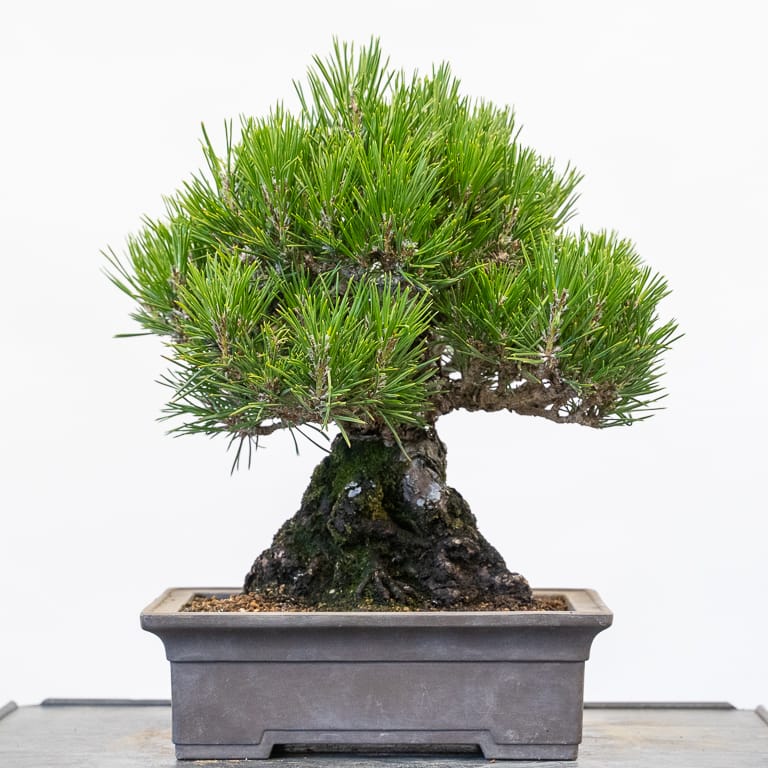
17 year-old black pine
And here’s the tree after decandling and thinning the old needles.
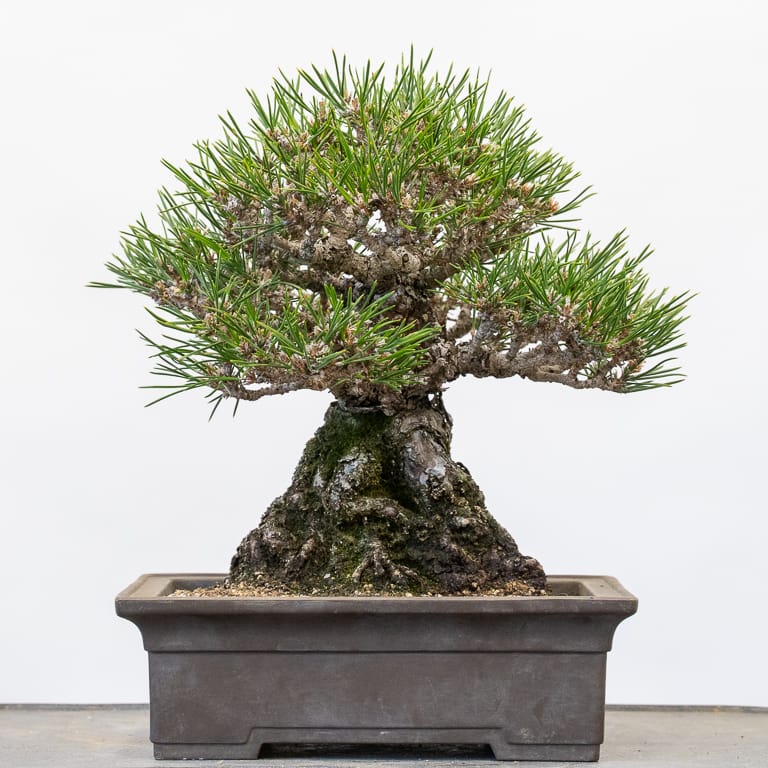
After decandling – 8.5″
I do similar work on younger trees that are less developed but in the same stage of development. Here’s a small pine before and after decandling and needle plucking.
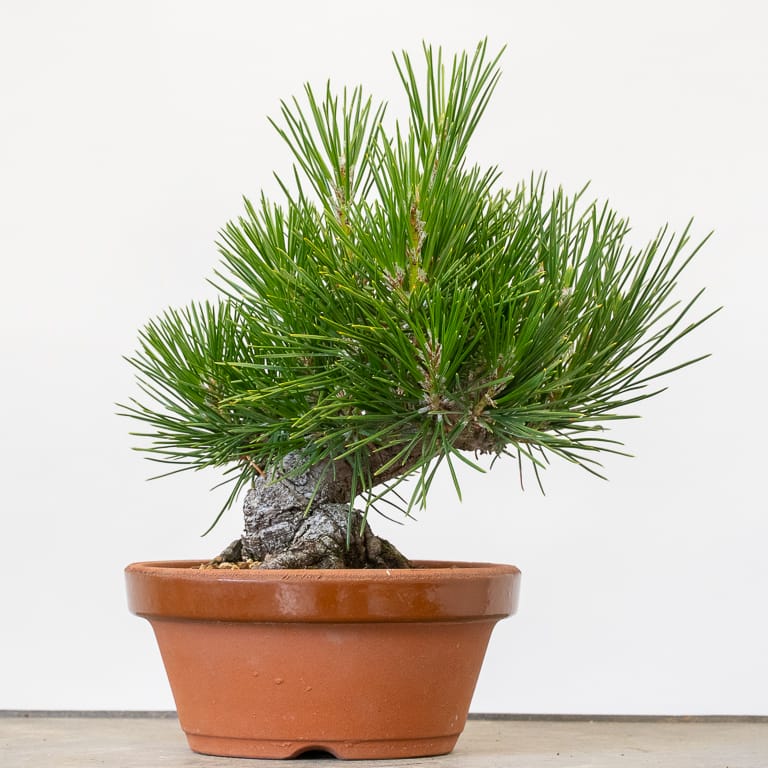
Black pine – before decandling
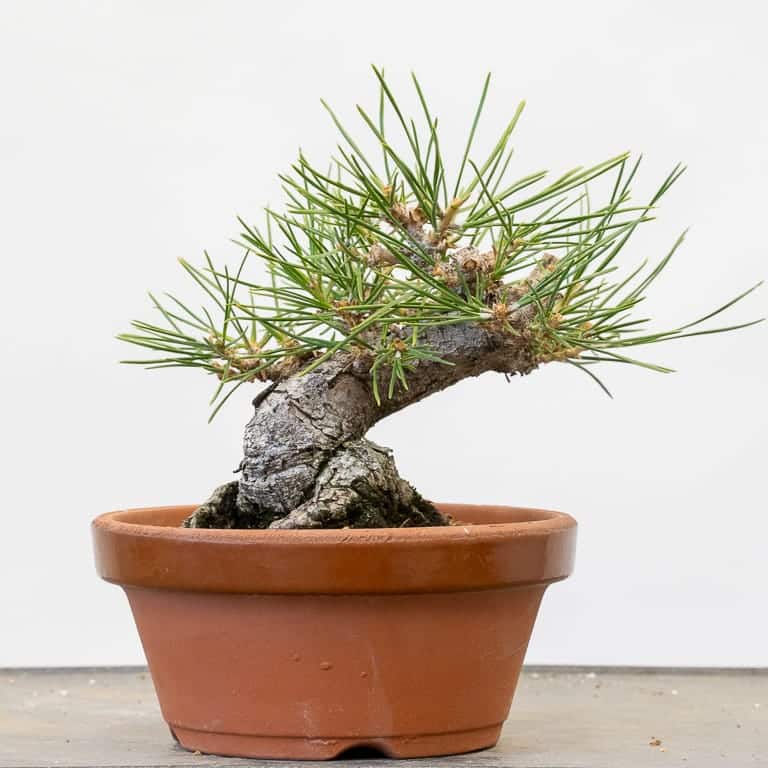
After decandling and thinning old needles – 6″
The above examples demonstrate the most common approaches to decandling – cases in which all of the spring growth is removed.
The alternative is to partially decandle a tree. In the example below, I decandled the future primary branches but left several sacrifice branches alone so the roots would continue to thicken.
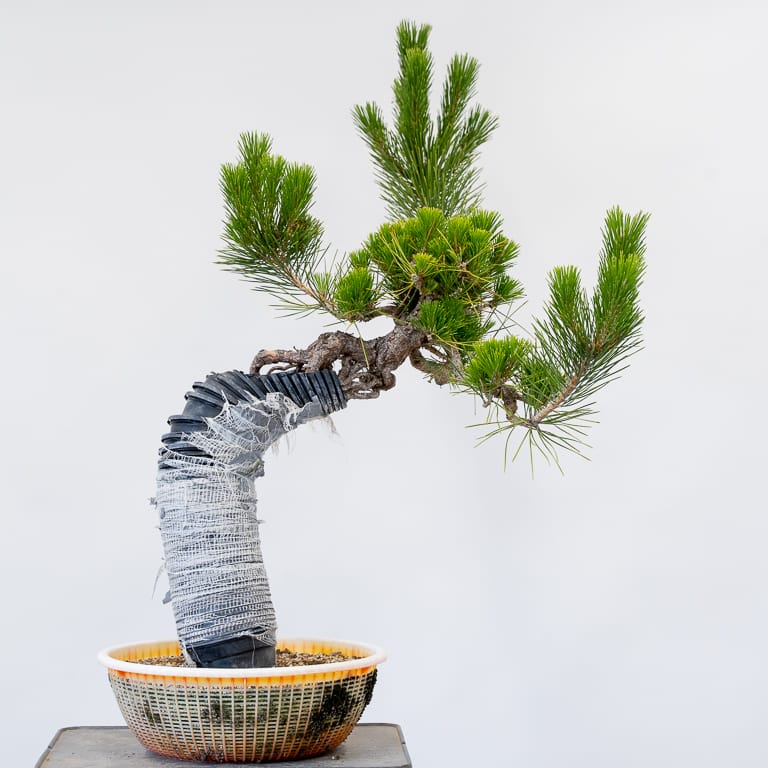
Exposed root pine
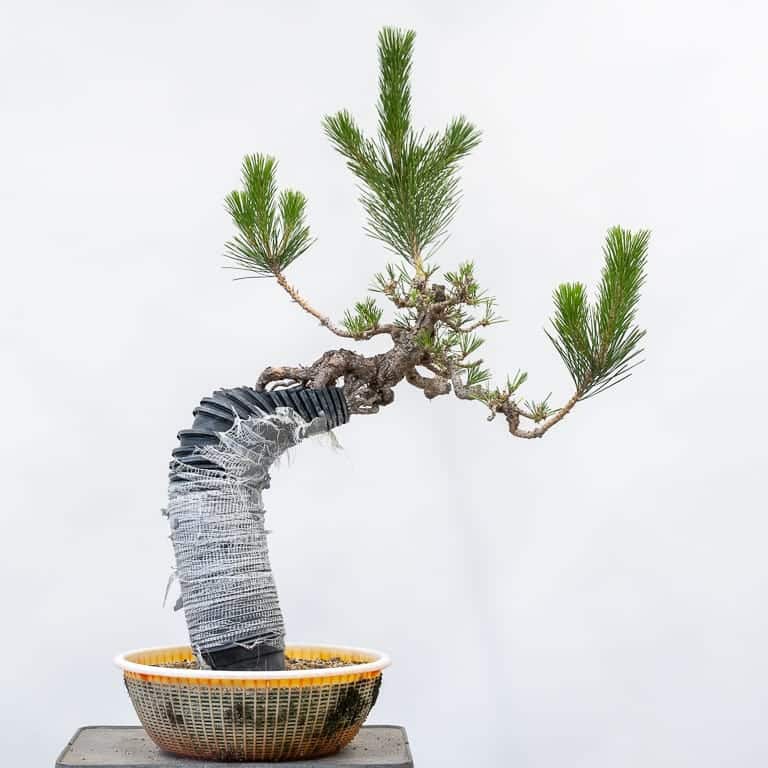
After decandling the future branches – 33″
The risk of partially decandling a tree is that decandled branches can dramatically slow down or even die back. For this reason, I’m selective about which branches I decandle.
I’ve made a few mistakes with this over the years, but I want to refine the approach so I experiment a bit every year (see my results from some of last year’s experiments in “Bonsai Development Series #22“).
Here’s another example of partial decandling. I removed a few needles and thinned the sacrifice branches on the top half of the tree and decandled the longer shoots on the lower section of the trunk.
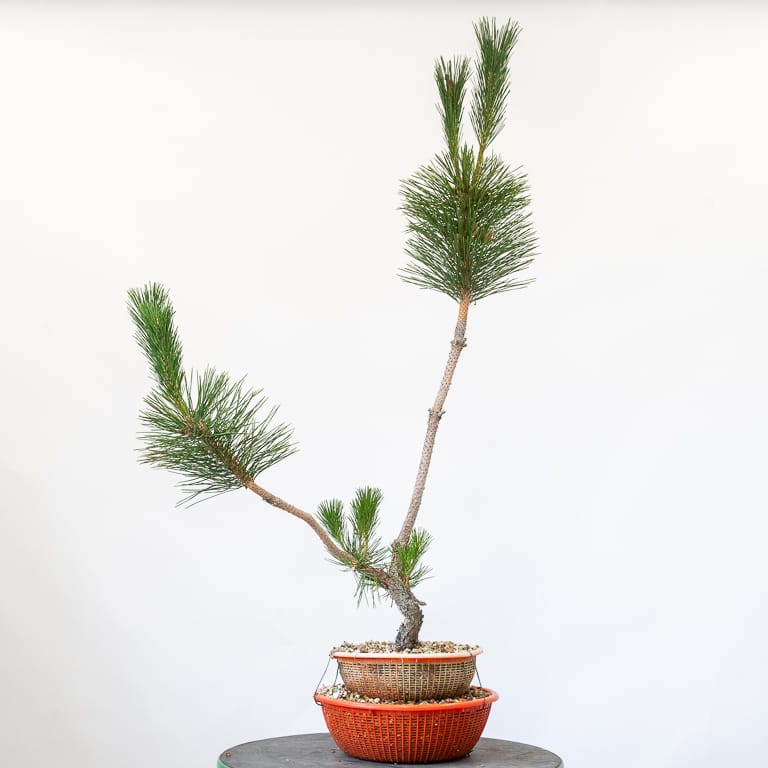
Five-year old black pine with long sacrifice branches
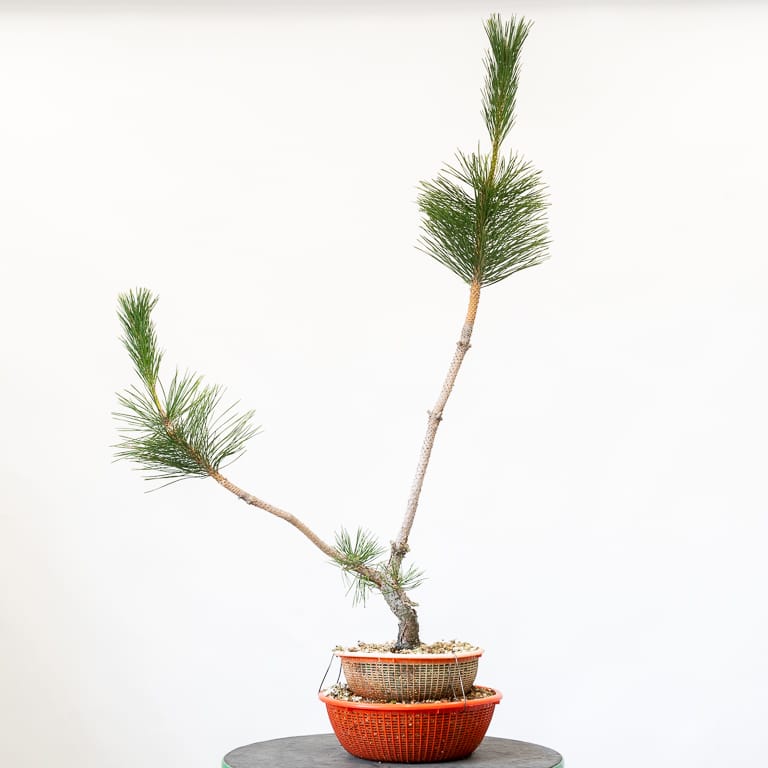
After decandling the lowest shoots – 44″
Once I’ve worked through all of my pines, I can return them to their benches where they’ll grow freely until November when it’s time for fall pruning and needle work. In the meantime, I’ll make sure the trees get as much sun as possible, and, starting next month, plenty of fertilizer too.
News and Updates
Soil update: This year’s soil shipments are scheduled to come in over a period of several months starting in September or October. I’ll provide more info when I have a better idea about the dates.
Chojubai chat: If you’re a fan of the dwarf Japanese flowering quince known as chojubai, check out the recent episode of the Bonsai Wire Podcast in which Andrew Robson and Michael Hagedorn discuss their approaches to training chojubai at their respective gardens in Portland, Oregon. You can listen to their discussion now at the Bonsai Wire Podcast. (FYI – more new episodes are on the way!)
Save the date: the Golden State Bonsai Federation is hosting a “Bonsai Rendezvous” at the Hotel Mission de Oro in Santa Nella, California, on October 2nd and 3rd. Resembling a “convention-lite,” the two-day event will feature free bonsai demonstrations both days, free professional bonsai critiques, silent auctions, and vendors from Northern and Southern California in one location. The event is open to the public and there’s no registration fee. Learn more from GSBF.
Subscribe to Bonsai Tonight
New Posts Delivered Every Tuesday and Friday
Paolo says
My developed shohin black pine ( posted last year at bonsai tonight forum, recovered after immersed technique as suggested) it is just starting to open buds (no candles) in south UK! Perhaps this slow growth is not bad for refinement?
Jonas Dupuich says
That sounds like good news to me. When pines are weak or stressed they can delay bud opening for a long time. Now’s a great time for the buds to develop because they’re roughly on pace with summer growth triggered by decandling. The slow growth can be great for refinement!
Adam says
Jonas, I don’t see much out there about optimum timing for heavy bends. Is June / July a good time for this work also or would another time be better like?
Jonas Dupuich says
Good times for heavy bends can change a bit depending on the species. I do most heavy bending November through February when trees are dormant as winter is mild where I live. I start this work earlier on junipers (late summer). I typically do less aggressive work when trees are growing vigorously.
Paul Woods says
Jonas , I follow your blog and black pine posts particularly , I am slightly off topic here , but followed your ‘growing black pine from seed’ method to the letter and had great results half I axis cut and the jury is out there but things look good, the other half around a dozen are healthy young ‘palm trees’ about an inch and a half tall, still in a small seed tray ( in akadama with a sand layer on top ) when do you think it wise to pot individually ?
1. now
2. winter ( if so early / late)
3. Spring .
I live in the UK and weather is probably nearer to Wa or Or , west of the cascades , not much snow , plenty of rain and 70/ 80s temps on average in summer.
Thanks
Jonas Dupuich says
Hi Paul – thanks for the note! I’ve done it both ways in terms of when I repot. If the trees are really close to each other – the stems are touching – I might repot now or in fall, but I usually wait until the normal repotting time of late winter/early spring.